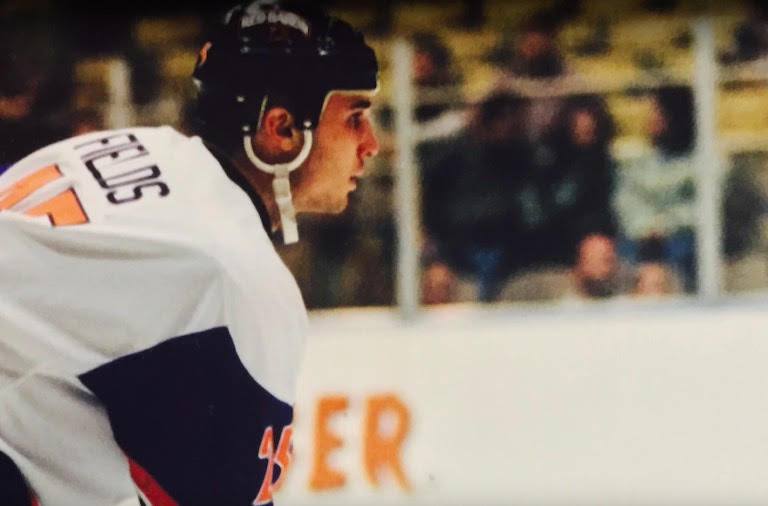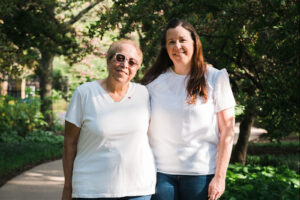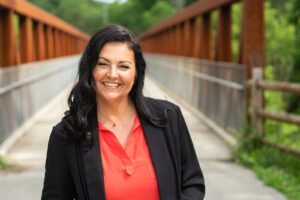Weeks away from landing a long sought-after NHL bid at 27 years old, Chicago native and pro hockey player Sam Fields found himself sleeping nearly 20 hours a day. Profuse sweating accompanied the extreme fatigue, so he eventually visited his physician for what he thought was the flu. Once there, the doctor took one look at Fields and told him to go straight to the hospital. Soon after arriving in the ER, Fields was given a diagnosis of late-stage chronic myeloid leukemia (CML) and about two weeks to live.
The next couple of months are understandably blurry for Fields. His body was failing and he was quarantined in the ICU. Eventually, Fields’ medical team suggested Gleevac, a new experimental chemotherapy drug wrapping up clinical trials at the time. His doctors believed Fields was a strong candidate for the drug and Fields felt there was nothing to lose. He agreed to give it a try.
Described as a “bullet” against cancer by Time magazine, Gleevac is now known as a miracle drug for CML. Fields certainly sees it that way, as the drug stabilized him enough for more routine intervention like chemotherapy infusions and radiation.
As a Jewish American, Fields’ connection to the medicine is even more personal. Biochemist Nicholas Lyndon invented Gleevac in the 1990s and oncologist Brian Druker streamlined the clinical trials in 2001 for FDA approval, but the pill is built upon Israeli researcher Eli Canaani’s work in the 1980s supported by the Israel Cancer Research Fund.
It was devastating to see the hurt my family was going through. I wanted to fight for them, I wanted to protect them—just like if I were on the ice. I wouldn’t give up.
Canaani and American hematologist Robert Gale discovered cancer protein fusion, the process of two key DNA genes in chromosomes 9 and 22 – also known as the “Philadelphia Chromosome” in CML – swapping spots, or translocating, and forming a leukemic-fused gene called BCR-ABL. The protein produced by this new gene fuels CML cells. Gleevac is successful because it targets that specific fusion and returns blood counts to normal without harming healthy cells. When asked what that Israeli connection meant to him, Fields says that it was “everything.” He even ended up meeting Canaani and broke down crying. “He set up the research to invent the medicine that saved my life,” says Fields. “It was surreal.”
Stable enough to begin rounds of chemotherapy and radiation, Fields still had to fight through treatment for six months. At more than 6 feet tall, Fields went down from 230 pounds to 150. This was due in part to mucositis in his throat, a side effect of chemotherapy and radiation that causes painful open sores. The active hockey player went from being in prime shape and working out four to six hours a day to barely being able to eat without severe pain. Fields was also confined to the hospital, receiving 13 bone marrow biopsies during his stay.

In hockey, Fields was known as an enforcer or “fighter.” He was accustomed to not backing down in intimidating situations. But cancer was especially challenging. “I just broke down one day,” says Fields. “I wasn’t sure how to keep going.” While Fields’ father was in his room, Fields reflected on his role as an enforcer. Part of the role as an enforcer in hockey is to protect teammates from harm. After that day, Fields saw his family as the ones to protect. “I’m not a quitter,” says Fields. “It was devastating to see the hurt my family was going through. I wanted to fight for them, I wanted to protect them—just like if I were on the ice. I wouldn’t give up.”
And he didn’t. It’s been nearly 17 years since Fields was declared cancer free. When he received the news on the first of October in 2003, he didn’t have a grand reaction like one might see in films or television. “I was just like, ‘Alright, let’s go have some fun,’” he quips. “I learned how life can change in the blink of an eye when I was diagnosed. I know the next day isn’t always guaranteed, so I live in the present. I was just ready to go on with my day, enjoy it and live.”
Fields certainly carries his experiences from both on the ice and off into his everyday life, expressing immense gratitude to be where he is today. Instead of a jersey or hospital gown, he sports a suit and tie as a public insurance adjuster at his own company, Fields Loss Consultants LLC, in Chicago’s Lincoln Park neighborhood where he excels in steadfast negotiations rather than aggressive physical intimidation. But making sure the person he’s fighting for doesn’t get the wrong end of the deal is the end goal all the same. “I’m protecting [my client] like I protect my family or protected my teammates on the ice,” says Fields. “The only difference is that my rink is a conference room now.”







